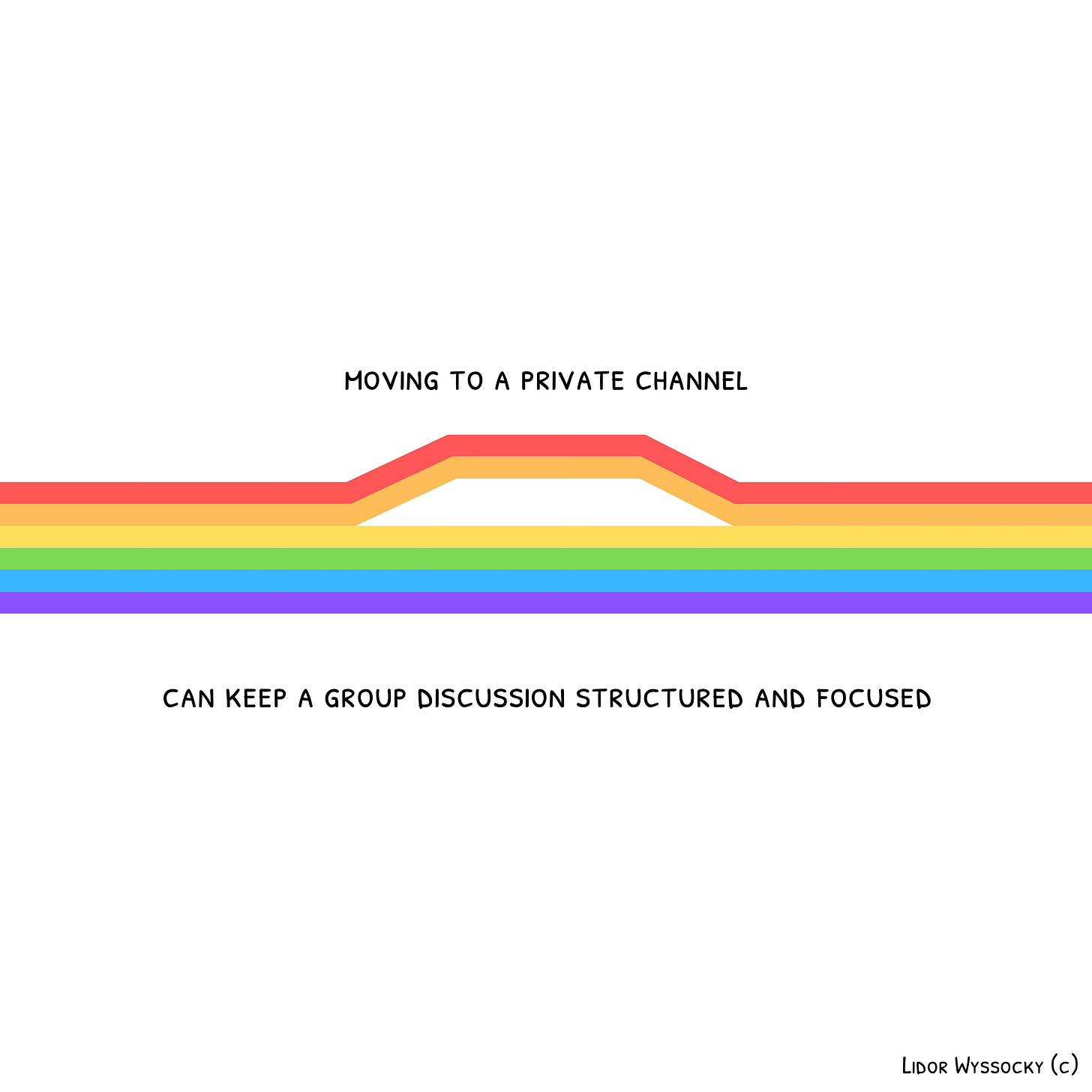Move to a Private Channel
I don’t like chat-based communication. It somehow always falls short of what I need. Either the messages are too short, too frequent, or both. Different topics and sub-threads are often discussed together, making it difficult to navigate and follow. And when people start to attach documents to the discussion, it becomes even messier.
I know chat-based communication does the job for some people in some cases. It’s ideal when you need a quick answer from a colleague. But let’s be honest: Is that really how we use chats, or are we overloading them with infinite discussions with four, five, or a dozen people? These chats often generate more noise than insights. And it gets worse.
No matter what you think about chat-based discussions, one thing is inexcusable: when two people start to discuss something between them right there in the group. It begins with asking a very specific question and tagging one participant. Then comes the reply, and in many cases, this is the trigger for an endless back-and-forth, leaving the other participants with endless notifications and no way to follow what’s actually important to the group.
Chat-based communication shouldn’t be used for deep discussions and should rarely be used in large groups. But whatever you use it for, the list of people participating in the chat must be aligned with its content.
If you need to verify something with one participant, move to a private channel. You can have as many iterations as you need without cluttering the group chat. Once you and your colleague conclude your side discussion, you can return to the group chat and share your insights.
Of course, this equally applies to an email thread. Not everyone on the thread needs to see every message exchange. Some side discussions might be crucial, but if there’s no need to involve everyone, you can move these discussions outside the thread and update the group when they are concluded.
Effective communication must be intentional. If your message is intended for one person but ends up distracting the entire group, something is wrong. If your message triggers an extended one-on-one discussion, the group chat becomes ineffective.
We have to intentionally choose the people we interact with based on the content of the message and what we aim to achieve. We can adjust the participant list as needed throughout the communication flow. We can create side discussions as long as we remember to reconvene. Sometimes, this is the only way to optimize our interactions and make them effective.
Unleash the power of Generative Communication and turn it into your superpower. I lead Generative Communication and Content-Shaping workshops and talks for teams and organizations.
With 1:1 mentoring, I help individuals communicate better, write better, and turn their ideas into an impact.
Drop me a message…


